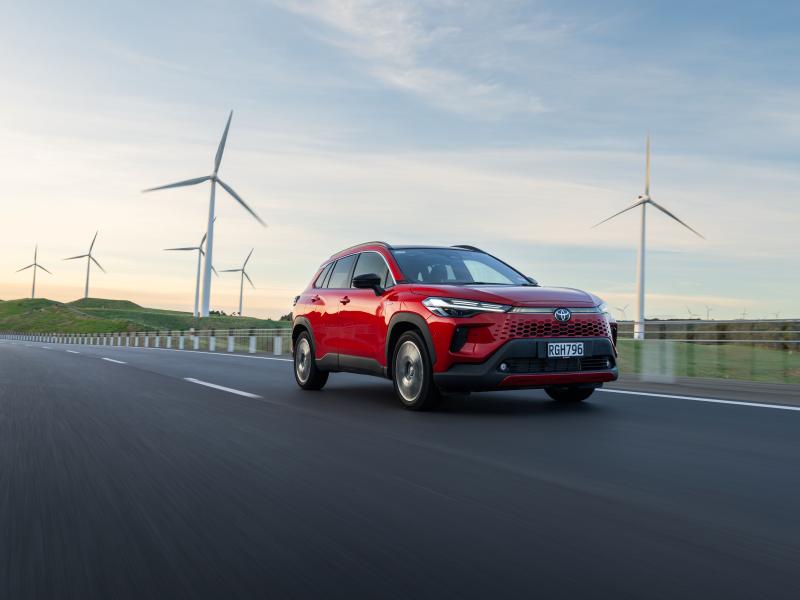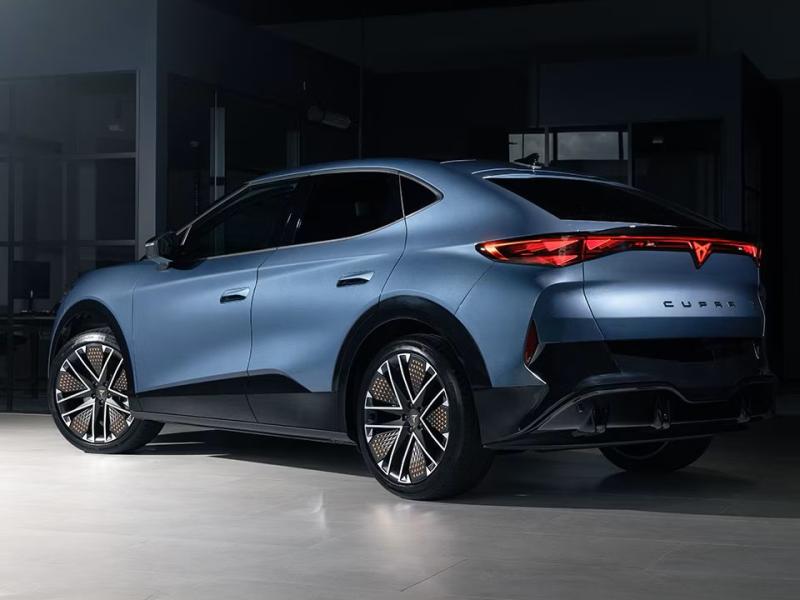Mazda has launched its new fleet focused large SUV – the new CX-8 – simultaneously announcing a not insignificant refresh of the Mazda6 line, and the introduction of some new engine tech for the long-serving fleet ‘fave’, the CX-5.
The big question many might be asking right now is: what is the thinking behind the CX-8? There’s already a CX-5 and a CX-9… do we need the CX-8?
And the answer to that is “yes” as far as Mazda New Zealand is concerned.
According to Mazda New Zealand managing director David Hodge, Mazda CX-8 will be a very popular addition to the company’s SUV line-up.
“We believe it will appeal to private buyers, but we also envisage fleets will find it an attractive proposition for those looking for an efficient and versatile vehicle that is equally at home around town or on the open road.”
While the once Japanese-domestic-model-only CX-8 nominally fits in between the slightly smaller CX-5 and the slightly larger CX-9, it presents a slightly different business direction for Mazda New Zealand, which is bringing in the next generation SKYACTIV-D diesel technology into the brand’s passenger line.
This flies in the face of many other manufacturers focused on downsizing petrol engines and using forced induction – turbo and superchargers – to make up the consumer-perceived power shortfall of smaller displacement engines or who are opting to go down the electric/hybrid vehicle superhighway.
Despite referencing the parent company’s collaboration with Toyota and Denso in the field of EV development, Mazda NZ suggests the electric vehicle is not yet the solution it could be.
That’s not to say it won’t be in the future, but for now, there is a ‘big picture’ global issue which affects the mass uptake of EVs, according to Mazda New Zealand.
Most countries don’t share New Zealand’s alternative power generation ability, often relying on coal to generate power – which you’d need more of obviously, if your national fleet had a meaningful number of EV’s. The environmental costs far outweigh the benefits.
To use a pollutant energy source to power eco-friendly vehicles does seem akin to ordering a super-sized family-meal from a fast food franchise and specifying a diet fizzy drink.
Diesel, while it may be considered a satanic fluid by many – especially in Europe, which has taken a rather draconian approach in some cities, actually banning the stuff – comes about through the refining of petrol anyway – which we still need to use – so why not ‘upcycle it?’
If, as an automaker, you are OK developing cleaner burning engine technology to minimise diesel’s pollutive nature and maximise its power potential – as Mazda is clearly doing – what’s the problem?
And this brings us back to Mazda’s all-encompassing SKYACTIV efficiency model.
SKYACTIV brings technology together from three specific areas of any given vehicle: the engine, the transmission and the overall chassis and body construction.
Refinement across all of these areas optimises the overall performance of the vehicle in keeping with Mazda’s design ethos of the vehicle becoming one with the driver, the end result being an efficient and holistic harmonisation of vehicle technology, which could be called greater than the sum of its parts.
All of which sounds very poetic but happens to be manifestly obvious to anyone who has ever driven a Mazda and thought there is something a little different about this car.
For those of a more down-to-earth disposition, Mazda’s SKYACTIV engine tech is possibly the most obvious place to quantify the concept.
SKYACTIV-D then – a 2.2 litre diesel engine – has been developed to make the most of diesel’s potential as a fuel and is available across the CX-8’s three-model range, in fact it is the only game in town for this vehicle.
Very simplistically, it uses new fuel injectors, improved combustion processes and variable geometry turbocharging to make it cleaner, more refined and well, more petrol-like, to drive.
To help cement the CX-8 into the existing Mazda family, a SKYACTIV-D engine has found its way into the CX-5 line-up which also welcomes the SKYACTIV-G 2.5 litre petrol engine, introduced on the redesigned Mazda6.
Confused? It's actually pretty simple: CX-5 gains two additional engines, one new diesel, one existing higher output petrol – as found in the CX-9 – and the existing standard petrol. The CX-8 comes with an all-diesel line-up and the Mazda6 gains the SKYACTIV-G high-power petrol engine of the CX-9, which it just happens to share with the CX-5.
All will become clearer as we review the vehicles in future editions.
And before anyone writes in to have a go about car companies not caring about the environment, but focusing for the most part on profit, consider the establishment of the Mazda Foundation in 2005, detailed on the previous page.
The answer to why Mazda NZ chose to bring in the CX-8 and potentially muddy the waters of the brand’s existing SUV line-up, comes about through an analysis of the new, New Zealand market.
According to Mazda’s figures, the passenger car market of New Zealand in 2015 was at a moderately healthy 52 percent of sales, excluding the rental car market. SUVs were at 48 percent.
By April of 2017, the two segments had effectively swapped, with SUVs recording a rocketing climb to 55 percent without any signs of slowing. Passenger cars had dipped to around 45 percent as the versatility, styling and equipment levels of the SUV kept the bigger vehicles in the fast lane.
A year later in April 2018, the SUVs made up 62 percent of the new vehicle market with cars down at 38 percent. Coincidentally, Mazda’s sales figures for its split between cars and SUVs mirrored the trend, coming in at a slightly higher 65 percent for SUVs and a slightly lower 35 percent for cars for the same time period.
Clearly, consumer hunger for SUVs was not going away and equally clearly, Mazda NZ felt there was more market share to be had.
It is however, a brave step to adopt diesel tech as the hero engine for the latest product offering and furthermore, to inject it into other existing – and very popular – vehicles such as the CX-5 and the Mazda6.
And what of the Mazda6? Surely the writing is or was on the wall, given the figures quoted?
Looking at the example of other market players, such as Mitsubishi and Nissan – two brands who have all but divested themselves of cars as we know them – why would you not downplay your car product in favour of your SUV offering?
“While we have seen a growth in SUV vehicles,” responds David Hodge, “the new Mazda6 Sedan and Wagon will appeal to customers who have different requirements or simply enjoy the thrill of getting behind the wheel of such a classy, elegant looking vehicle with outstanding driving dynamics.”
In short, New Zealand buyers don’t ALL want SUVs, and Mazda NZ is making sure those who don’t, still enjoy what has been described as being the benchmark for vehicles in New Zealand’s mid-sized segment.
Accordingly, the Mazda6 has not only received a redesign for the second quarter of this year, it’s a significant redesign, with a completely new specification level to add to the mix.
The Mazda6 has incidentally, seen updates and improvements every year the vehicle has been on sale; the improvements coming about through the development and subsequent inclusion of new materials and technologies.
A good example of this can also be found as one of the definitive characteristics shared by – and what is very apparent in – the CX-8: G-vectoring control.
This Mazda-tech reduces engine torque output at the turn-in point of a corner which puts extra weight onto the front tyres to give a more direct and linear steering response says Mazda.
From a driver’s perspective
The effect is more pronounced on the CX-8 with its higher centre of gravity, and from the driver’s perspective, it feels as if the car is trying to steer for you, with a sensation closely akin to a force feedback gaming wheel for a PlayStation or X-Box.
Initially, you may find yourself overcompensating on a corner as a result of getting used to the sensation. But once you establish that the cornering is actually being improved with the system’s assistance, you’ll appreciate the more immediate and controlled response.
For the Mazda6 especially, the G-vectoring control assistance is not quite so obvious, as it serves to merely amplify the car’s already excellent handling.
As to the new specification level, this is TAKAMI, which sits as the jewel in the crown of the Mazda6 range, which now spans GSX, Limited and now Takami.
The literal translation of Takami is ‘higher than the rest’, which really says it all. This specification level has the highest quality interior, the choicest materials, and the best of the all-encompassing SKYACTIV package made up of engine, transmission and chassis.
With the use of a Japanese word to describe the highest specification, Mazda is proudly demonstrating its heritage and country of origin, something other ‘global’ brands would find hard to emulate today.
Mazda New Zealand has not had an easy road of it over the last 18 months, with supply constraints from its factories and the debacle over a certain fragrant insect – which affected so many other manufacturers – compounding the problem. All has been resolved now however, with just the CX-8 being a little tight in terms of supply. This of course, due to the SUV that was once a domestic model now being produced to serve New Zealand, Australia, Saudi Arabia and possibly China.






